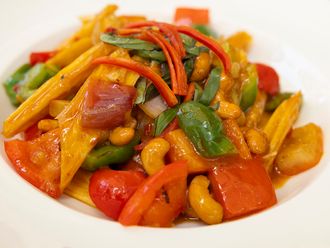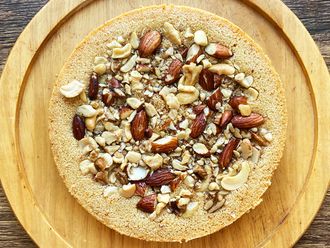
New York: Chef Miguel Trinidad was in his mid-30s and a relatively inexperienced cook in New York when he decided to help a co-worker realise her dream of opening a modern Filipino restaurant.
Trinidad, whose family hails from the Dominican Republic, had no knowledge about Filipino food. But he had lived in the Philippines for several months to learn how to make staples such as adobos, a traditional dish, and arroz caldo, a rice porridge, from respected local chefs and cooks.
With his partner Nicole Ponseca, Trinidad opened the restaurant Maharlika in 2011. Their second eatery, Jeepney, is billed as a Filipino gastropub.
The 40-year-old New York City native spoke to Reuters about learning to cook Filipino food, whether it will catch on as the next hot Asian cuisine in New York and eating balut for the first time.
Q: What are you trying to accomplish with Jeepney?
A: No one here really knows what Filipino food is. If you ask anyone what Filipino food is, they wouldn’t even say it’s Asian. What we want to do at Jeepney is to make the food fun. We want to give it soul and present it in a way that’s familiar with people and easy for them to come in to try. We basically make Filipino soul food. It is not fusion, whatever. Everything is authentic to what Filipino cuisine is, but we present it in a different vessel.
Q: What are the different influences of Filipino cuisine?
A: If you look at the history of cuisine, it’s the original fusion cuisine. There’s Malay influence. There’s Chinese influence. There’s Japanese. There’s Spanish. All these flavours came together to what it is today. What we wanted to do is to honour that. The flavour profile of Filipino cuisine is sweet, sour and salty. It’s very intense. It’s very polarizing. You either like it or you don’t. You have the strong flavour from shrimp paste. You have a lot of use of vinegars, coconut milk, so the flavours are really intense and really strong. It’s really straight forward. It hits you really hard and it’s fantastic.
Q: What was your first experience with eating balut (a boiled fertilized egg)?
A: The first time I ordered balut I was with my business partner at the time. We ordered some baluts and we cracked it open. My balut was really developed. It had a lot of feathers on it. It was a little bit crunchy. The experience was exactly what it was. My take is that the visual is not exciting, but the flavour is of a really rich hardboiled egg. It’s a great source of protein ...
It’s a delicacy and an alleged aphrodisiac. It’s a daring fun food. We have a lot of people who order it at the restaurant just for the experience.
Q: Do you think Filipino food will be the next popular cuisine?
A: Since we started doing this, the food has been placed under the microscope. There have been other restaurants that have popped up doing Filipino cuisine ... People are coming out, seeking Filipino food, wanting to know what it is. They have seen it in all sorts of media from television to print. It is beginning to get the respect it deserves.
Q: Where did your love of cooking come from?
A: I was born inside a New York City taxi cab. I grew up on the Lower East Side on Dominican food. I always wanted to seek out new food and flavours. I remember watching Julia Child and Jacques Pepin on television.
I asked my mum, “Could we make this or that?” She would say you could make whatever you want as long as you use what’s in the cabinets. So we would make lasagna with Latino flavours. It’s a Latin thing to put raisins in the ground beef. We grew up around all this food. We were down the street from Chinatown, so we would go to Chinatown and try some food there. We had all the kosher places in the neighbour and befriended a lot of owners. We tried kugels (a baked pudding or casserole), noodle pudding, and all sort of different things at an early age.
















